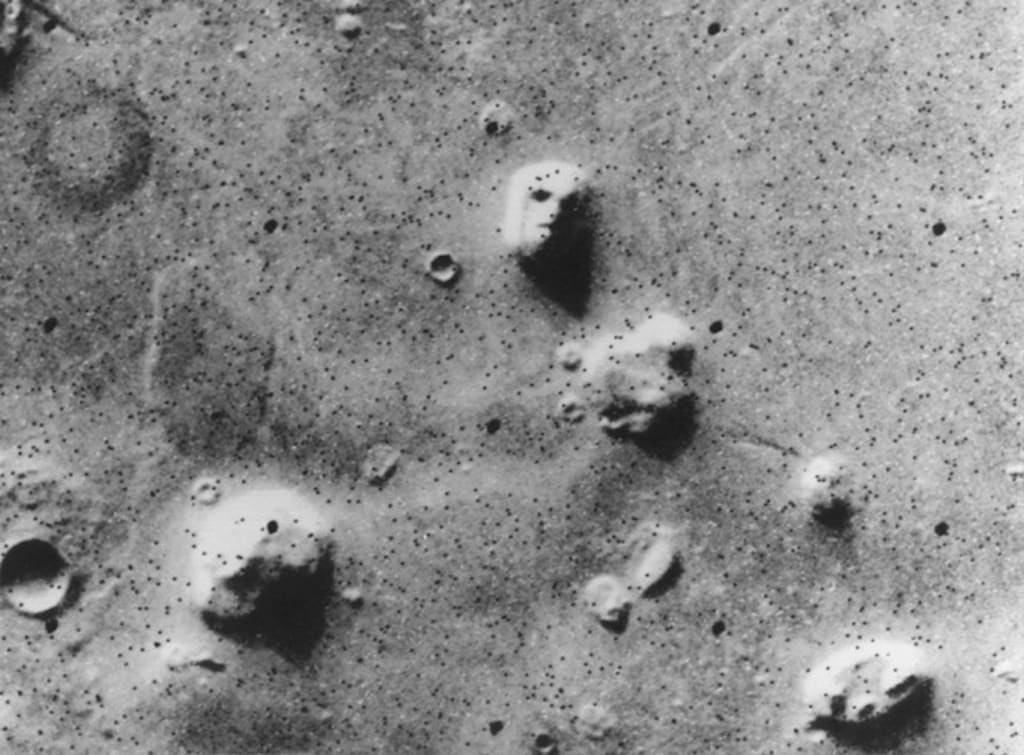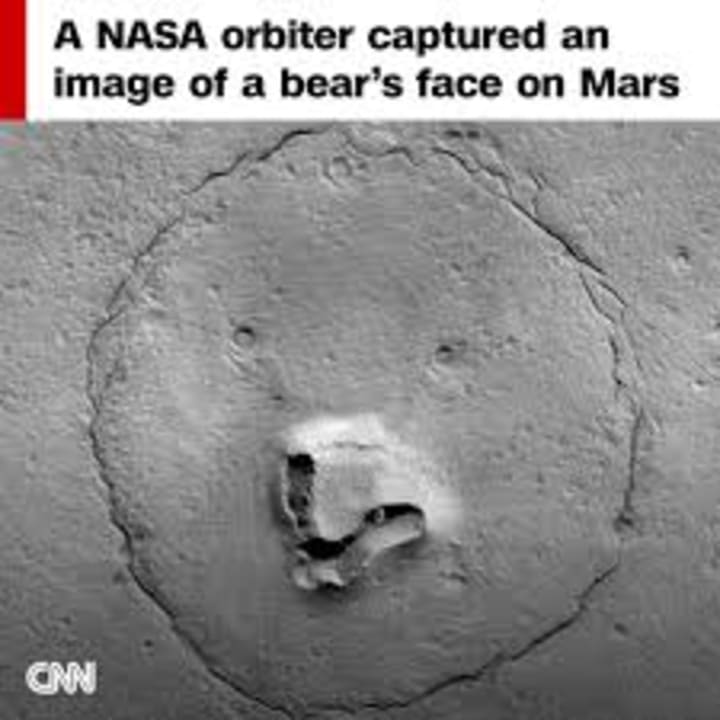
It's fascinating how the human brain can often interpret patterns and shapes as recognizable objects, even when they're purely coincidental. This phenomenon, known as pareidolia, has led to people seeing faces, animals, and other familiar forms in various natural and man-made structures. The "Bear's head" you mentioned is indeed a great example of this.
As for the proposed term "beridolia," it's a creative play on words that could be used to describe the specific pareidolia of seeing bear-like features on Mars. It's a fun way to acknowledge the tendency to see familiar shapes in random patterns, much like the term "pareidolia" itself.

The geological processes that shape planetary surfaces can lead to formations that, from a distance or at a certain angle, appear to resemble familiar objects. The "face" on Mars is one of the most famous examples of this phenomenon. It's a reminder of how our perception can be influenced by our cognitive biases and natural tendency to find order in chaos.
Studying these formations can also provide insights into the geological history of the planet, helping scientists better understand the processes that have shaped its surface over millions of years. The ability to capture high-resolution images with spacecraft like the Mars Reconnaissance Orbiter has enabled us to explore these formations in more detail and gain a deeper understanding of the geology of Mars.
It's intriguing how our human tendency to recognize familiar shapes and objects can lead us to see various patterns in the Martian landscape, even though these formations are ultimately the result of natural geological processes. The examples you've shared of pareidolia on Mars are quite amusing and highlight how our minds often seek out familiar patterns in our surroundings.
The case of the "face" on Mars, initially seen in low-resolution images from the Viking Orbiter and later clarified by higher-resolution images from the Mars Reconnaissance Orbiter, is a classic example of how changes in perspective and improved imaging technology can dispel seemingly mysterious phenomena. The same applies to the other examples you've mentioned, like the Bigfoot-like rock or the various animal and object shapes that have been identified in Martian landscapes.
The shapes and formations on Mars are the result of natural processes like impacts, erosion, and tectonic activity. While it's fun to speculate about the possibility of extraterrestrial civilizations or hidden messages, it's important to approach these observations with a scientific mindset and consider the more likely explanations rooted in geology and planetary science.

Mars Odyssey's Themis camera has indeed provided us with valuable insights into the Martian surface, and the wide variety of shapes that can be perceived is a testament to the diverse ways that geological processes have shaped the planet's features over time. It's a reminder of the dynamic and ever-changing nature of planetary landscapes.
While the human imagination can certainly run wild with these formations, they ultimately serve as a reminder of the marvels of nature and the mysteries that planets like Mars can hold. It's always exciting to explore and learn more about the universe around us, even if some of the interpretations are more fantastical than factual.
It's true that scientists often approach such observations with a rational and analytical mindset, aiming to explain natural phenomena based on known geological processes. While it can be disappointing for some when imaginative interpretations turn out to have more straightforward explanations, this methodical approach is essential for advancing our understanding of the world around us.
In the case of the "door-shaped" opening on Mars, the explanation involving natural erosion and geological processes does make sense. The strata and layers in the rock, combined with the forces of wind and gravity, are likely responsible for creating the appearance of a door. It's a great example of how the interplay of various geological factors can lead to formations that resemble familiar shapes.
Moving on to the example of the comet, the image captured by the European spacecraft Rosetta in 2014 is truly fascinating. Comets are intriguing celestial objects that have been studied extensively to learn more about the early solar system. The unique shapes and features observed on comets are the result of their composition, the way they interact with the Sun's radiation, and various geological processes that occur on their surfaces.

The scientific exploration of both Mars and comets, along with many other celestial bodies, continues to provide us with valuable insights into the formation and evolution of our solar system and the broader universe. While some formations may initially capture our imagination in unexpected ways, they also serve as reminders of the beauty and complexity of natural processes at work.
About the Creator
Rohan
I am young and enthusiastic writer, prefer to get more encouragement from fellow audience and colleagues. Please do support guys.. Thanks in advance.. Thanks for all the love & encouragement .. cheers






Comments
There are no comments for this story
Be the first to respond and start the conversation.